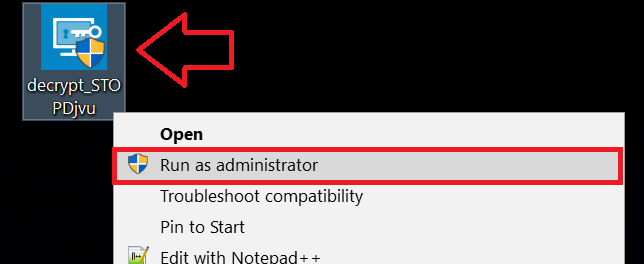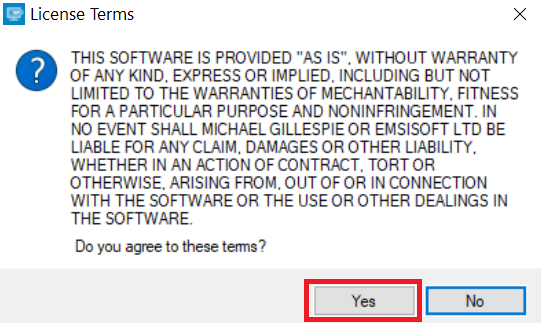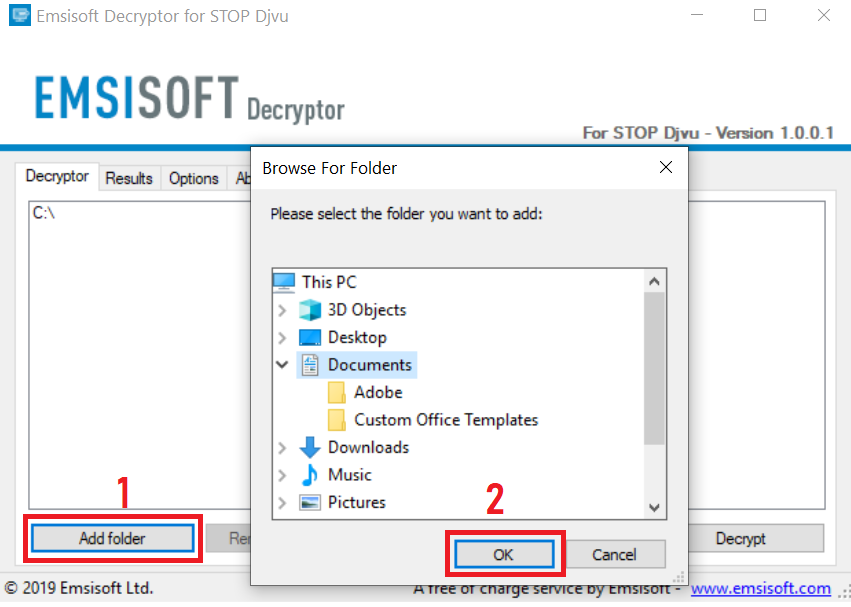Held Ransomware: What You Need to Know
Held ransomware is a dangerous new member of the infamous STOP/DJVU ransomware family. If you find your files renamed with the .Held extension and are unable to access them, your system has been compromised. This ransomware encrypts files and demands payment for their recovery.
The attackers leave a ransom note (_readme.txt) in the affected folders. This note outlines instructions for paying the ransom and recovering your files. However, experts strongly recommend avoiding payment, as it does not guarantee file recovery and supports criminal activity.
Before attempting any file recovery, ensure that you completely remove the ransomware. Use a trusted anti-malware tool and back up the encrypted files to avoid further corruption or loss during the cleanup process.
![Held Virus Ransomware [.Held Files] Removal + Recovery](https://cdn.sensorstechforum.com/wp-content/uploads/2024/12/held-virus-ransomware-held-files-encrypted-1-1024x576.png)
Held Virus Details
| Name | Held virus, also known as UDS:Trojan.Win32.Chapak.gen, Ransom:Win32/StopCrypt.KM!MTB, Win32:PWSX-gen [Trj], Win32:PWSX-gen [Trj], A Variant Of Win32/GenKryptik.FHJB – more detections of this virus on VirusTotal |
| File Extension | .held |
| Type | Ransomware, Cryptovirus |
| Ransom Demanding Note | _readme.txt |
| Removal Time | 5 Minutes |
| Detection Tool |
Check if your Mac has been affected by Held Virus
Download
Malware Removal Tool
|
Understanding Held Ransomware: Its Mechanism and Risks
This malware uses advanced encryption techniques like the Salsa20 algorithm to lock your data. Each victim receives a unique decryption key stored on the attacker’s servers, making it almost impossible to decrypt files without paying. These features make Held ransomware a severe threat to both individuals and businesses.
The malware typically spreads through compromised software, malicious ads, and phishing emails. Once installed, it quickly encrypts files and alters file extensions, leaving victims with limited options for recovery. Its ability to bypass basic antivirus tools emphasizes the need for proactive cybersecurity measures.
First Signs of Infection
Held ransomware operates stealthily but leaves clear signs of infection. Here’s what to watch for:
- Files renamed with the .Held extension.
- Ransom notes (_readme.txt) in folders with encrypted files.
- Slow system performance as the ransomware runs in the background.
The ransom note may contain the following message:
ATTENTION!
Don’t worry, you can return all your files!
All your files like pictures, databases, documents and other important are encrypted with strongest encryption and unique key.
The only method of recovering files is to purchase decrypt tool and unique key for you.
This software will decrypt all your encrypted files.
What guarantees you have?
You can send one of your encrypted file from your PC and we decrypt it for free.
But we can decrypt only 1 file for free. File must not contain valuable information.
Do not ask assistants from youtube and recovery data sites for help in recovering your data.
They can use your free decryption quota and scam you.
Our contact is emails in this text document only.
You can get and look video overview decrypt tool.
Price of private key and decrypt software is $999.
Discount 50% available if you contact us first 72 hours, that’s price for you is $499.
Please note that you’ll never restore your data without payment.
Check your e-mail “Spam” or “Junk” folder if you don’t get answer more than 6 hours.To get this software you need write on our e-mail:
support@freshingmail.topReserve e-mail address to contact us:
datarestorehelpyou@airmail.ccYour personal ID:
0876Heldrsa_pubkey.plain
—–BEGIN PUBLIC KEY—–
MIIBIjANBgkqhkiG9w0BAQEFAAOCAQ8AMIIBCgKCAQEA2iF2z8qTGWyGMtNhPR7G
MGAf/Cj6VowurSUOyORyuV6zmACc4fML4hGZe2+jMtlmPuDm9AKDe2A7ktEm+8AV
WTov1Vz9zeVkt6hy7KlP+fM+wTiEtwbYALKQV0RCYHyhH8z36Dco/dcL+M+OSwcd
J9jJ5VBro0+QMbS+FRjk0GS4DwzprGjSwPLJWp4H1iZHhEcUplB4krFkwsyNfhb/
aiJzA/4ZYz/+hPdv9YQxd3R+bgv2LdzV605176wsakPezqJxUSHxOEkkpYP4P149
XsXG76vTNjWPRW/M3+oKBtMvAXzMYuRR9q1peV++b1l6hgkiuqDicGvT9JPCUDld
4QIDAQAB
—–END PUBLIC KEY—–
Identifying these signs early can limit damage and give you a better chance to secure your system before further encryption occurs.
The Ransom Note: What It Says
The ransom note explains the attack and demands payment for file recovery. Attackers promise to decrypt one file for free as proof of their capability. However, paying the ransom often leads to financial loss without data recovery. The note typically includes contact details and a deadline for payment, threatening to increase the price if victims delay.
Steps to Remove Held Ransomware
Removing Held ransomware is essential to protect your system. There are two primary methods:
1. Manual Removal
This method involves locating and deleting ransomware-related files and registry entries. It requires technical expertise and carries risks, as accidental deletion of critical files can harm your system further.
2. Automatic Removal
Using professional anti-malware tools is safer and more efficient. These tools scan your system, remove all traces of the ransomware, and prevent future infections. This approach is recommended for most users.
Decrypting Your Files: Can It Be Done?
File recovery after a ransomware attack depends on whether the ransomware used an online or offline key. For Held ransomware, offline keys increase the chances of successful decryption using tools like the STOP Decryptor.
However, recovery is not guaranteed. Always remove the ransomware before attempting decryption to prevent further encryption. Back up all encrypted files before using any recovery tools.
Preventing Future Attacks
Protecting yourself from ransomware involves adopting proactive measures:
- Be cautious online: Avoid suspicious links and emails.
- Download only from trusted sources: Stick to official websites.
- Keep your software updated: Regular updates fix vulnerabilities.
- Use strong security tools: Install and regularly update anti-malware software.
- Backup your data: Maintain backups in multiple locations, including offline storage.
Conclusion
Held ransomware is a dangerous cyber threat that encrypts files and demands payment for their release. Its sophisticated encryption and distribution methods make prevention critical. By using strong security tools, practicing safe online habits, and maintaining regular backups, you can protect your data from similar attacks in the future.
Always prioritize your system’s safety by removing threats immediately and consulting professional tools for file recovery. Remember, prevention is the best defense against ransomware.
- Step 1
- Step 2
- Step 3
- Step 4
- Step 5
Step 1: Scan for Held Virus with SpyHunter Anti-Malware Tool



Ransomware Automatic Removal - Video Guide
Step 2: Uninstall Held Virus and related malware from Windows
Here is a method in few easy steps that should be able to uninstall most programs. No matter if you are using Windows 10, 8, 7, Vista or XP, those steps will get the job done. Dragging the program or its folder to the recycle bin can be a very bad decision. If you do that, bits and pieces of the program are left behind, and that can lead to unstable work of your PC, errors with the file type associations and other unpleasant activities. The proper way to get a program off your computer is to Uninstall it. To do that:


 Follow the instructions above and you will successfully delete most unwanted and malicious programs.
Follow the instructions above and you will successfully delete most unwanted and malicious programs.
Step 3: Clean any registries, created by Held Virus on your computer.
The usually targeted registries of Windows machines are the following:
- HKEY_LOCAL_MACHINE\Software\Microsoft\Windows\CurrentVersion\Run
- HKEY_CURRENT_USER\Software\Microsoft\Windows\CurrentVersion\Run
- HKEY_LOCAL_MACHINE\Software\Microsoft\Windows\CurrentVersion\RunOnce
- HKEY_CURRENT_USER\Software\Microsoft\Windows\CurrentVersion\RunOnce
You can access them by opening the Windows registry editor and deleting any values, created by Held Virus there. This can happen by following the steps underneath:


 Tip: To find a virus-created value, you can right-click on it and click "Modify" to see which file it is set to run. If this is the virus file location, remove the value.
Tip: To find a virus-created value, you can right-click on it and click "Modify" to see which file it is set to run. If this is the virus file location, remove the value.
Before starting "Step 4", please boot back into Normal mode, in case you are currently in Safe Mode.
This will enable you to install and use SpyHunter 5 successfully.
Step 4: Boot Your PC In Safe Mode to isolate and remove Held Virus





Step 5: Try to Restore Files Encrypted by Held Virus.
Method 1: Use STOP Decrypter by Emsisoft.
Not all variants of this ransomware can be decrypted for free, but we have added the decryptor used by researchers that is often updated with the variants which become eventually decrypted. You can try and decrypt your files using the instructions below, but if they do not work, then unfortunately your variant of the ransomware virus is not decryptable.
Follow the instructions below to use the Emsisoft decrypter and decrypt your files for free. You can download the Emsisoft decryption tool linked here and then follow the steps provided below:
1 Right-click on the decrypter and click on Run as Administrator as shown below:

2. Agree with the license terms:

3. Click on "Add Folder" and then add the folders where you want files decrypted as shown underneath:

4. Click on "Decrypt" and wait for your files to be decoded.

Note: Credit for the decryptor goes to Emsisoft researchers who have made the breakthrough with this virus.
Method 2: Use data recovery software
Ransomware infections and Held Virus aim to encrypt your files using an encryption algorithm which may be very difficult to decrypt. This is why we have suggested a data recovery method that may help you go around direct decryption and try to restore your files. Bear in mind that this method may not be 100% effective but may also help you a little or a lot in different situations.
Simply click on the link and on the website menus on the top, choose Data Recovery - Data Recovery Wizard for Windows or Mac (depending on your OS), and then download and run the tool.
Held Virus-FAQ
What is Held Virus Ransomware?
Held Virus is a ransomware infection - the malicious software that enters your computer silently and blocks either access to the computer itself or encrypt your files.
Many ransomware viruses use sophisticated encryption algorithms to make your files inaccessible. The goal of ransomware infections is to demand that you pay a ransom payment to get access to your files back.
What Does Held Virus Ransomware Do?
Ransomware in general is a malicious software that is designed to block access to your computer or files until a ransom is paid.
Ransomware viruses can also damage your system, corrupt data and delete files, resulting in the permanent loss of important files.
How Does Held Virus Infect?
Via several ways.Held Virus Ransomware infects computers by being sent via phishing emails, containing virus attachment. This attachment is usually masked as an important document, like an invoice, bank document or even a plane ticket and it looks very convincing to users.
Another way you may become a victim of Held Virus is if you download a fake installer, crack or patch from a low reputation website or if you click on a virus link. Many users report getting a ransomware infection by downloading torrents.
How to Open .Held Virus files?
You can't without a decryptor. At this point, the .Held Virus files are encrypted. You can only open them once they are decrypted using a specific decryption key for the particular algorithm.
What to Do If a Decryptor Does Not Work?
Do not panic, and backup the files. If a decryptor did not decrypt your .Held Virus files successfully, then do not despair, because this virus is still new.
Can I Restore ".Held Virus" Files?
Yes, sometimes files can be restored. We have suggested several file recovery methods that could work if you want to restore .Held Virus files.
These methods are in no way 100% guaranteed that you will be able to get your files back. But if you have a backup, your chances of success are much greater.
How To Get Rid of Held Virus Virus?
The safest way and the most efficient one for the removal of this ransomware infection is the use a professional anti-malware program.
It will scan for and locate Held Virus ransomware and then remove it without causing any additional harm to your important .Held Virus files.
Can I Report Ransomware to Authorities?
In case your computer got infected with a ransomware infection, you can report it to the local Police departments. It can help authorities worldwide track and determine the perpetrators behind the virus that has infected your computer.
Below, we have prepared a list with government websites, where you can file a report in case you are a victim of a cybercrime:
Cyber-security authorities, responsible for handling ransomware attack reports in different regions all over the world:
Germany - Offizielles Portal der deutschen Polizei
United States - IC3 Internet Crime Complaint Centre
United Kingdom - Action Fraud Police
France - Ministère de l'Intérieur
Italy - Polizia Di Stato
Spain - Policía Nacional
Netherlands - Politie
Poland - Policja
Portugal - Polícia Judiciária
Greece - Cyber Crime Unit (Hellenic Police)
India - Mumbai Police - CyberCrime Investigation Cell
Australia - Australian High Tech Crime Center
Reports may be responded to in different timeframes, depending on your local authorities.
Can You Stop Ransomware from Encrypting Your Files?
Yes, you can prevent ransomware. The best way to do this is to ensure your computer system is updated with the latest security patches, use a reputable anti-malware program and firewall, backup your important files frequently, and avoid clicking on malicious links or downloading unknown files.
Can Held Virus Ransomware Steal Your Data?
Yes, in most cases ransomware will steal your information. It is a form of malware that steals data from a user's computer, encrypts it, and then demands a ransom in order to decrypt it.
In many cases, the malware authors or attackers will threaten to delete the data or publish it online unless the ransom is paid.
Can Ransomware Infect WiFi?
Yes, ransomware can infect WiFi networks, as malicious actors can use it to gain control of the network, steal confidential data, and lock out users. If a ransomware attack is successful, it could lead to a loss of service and/or data, and in some cases, financial losses.
Should I Pay Ransomware?
No, you should not pay ransomware extortionists. Paying them only encourages criminals and does not guarantee that the files or data will be restored. The better approach is to have a secure backup of important data and be vigilant about security in the first place.
What Happens If I Don't Pay Ransom?
If you don't pay the ransom, the hackers may still have access to your computer, data, or files and may continue to threaten to expose or delete them, or even use them to commit cybercrimes. In some cases, they may even continue to demand additional ransom payments.
Can a Ransomware Attack Be Detected?
Yes, ransomware can be detected. Anti-malware software and other advanced security tools can detect ransomware and alert the user when it is present on a machine.
It is important to stay up-to-date on the latest security measures and to keep security software updated to ensure ransomware can be detected and prevented.
Do Ransomware Criminals Get Caught?
Yes, ransomware criminals do get caught. Law enforcement agencies, such as the FBI, Interpol and others have been successful in tracking down and prosecuting ransomware criminals in the US and other countries. As ransomware threats continue to increase, so does the enforcement activity.
About the Held Virus Research
The content we publish on SensorsTechForum.com, this Held Virus how-to removal guide included, is the outcome of extensive research, hard work and our team’s devotion to help you remove the specific malware and restore your encrypted files.
How did we conduct the research on this ransomware?
Our research is based on an independent investigation. We are in contact with independent security researchers, and as such, we receive daily updates on the latest malware and ransomware definitions.
Furthermore, the research behind the Held Virus ransomware threat is backed with VirusTotal and the NoMoreRansom project.
To better understand the ransomware threat, please refer to the following articles which provide knowledgeable details.
As a site that has been dedicated to providing free removal instructions for ransomware and malware since 2014, SensorsTechForum’s recommendation is to only pay attention to trustworthy sources.
How to recognize trustworthy sources:
- Always check "About Us" web page.
- Profile of the content creator.
- Make sure that real people are behind the site and not fake names and profiles.
- Verify Facebook, LinkedIn and Twitter personal profiles.


